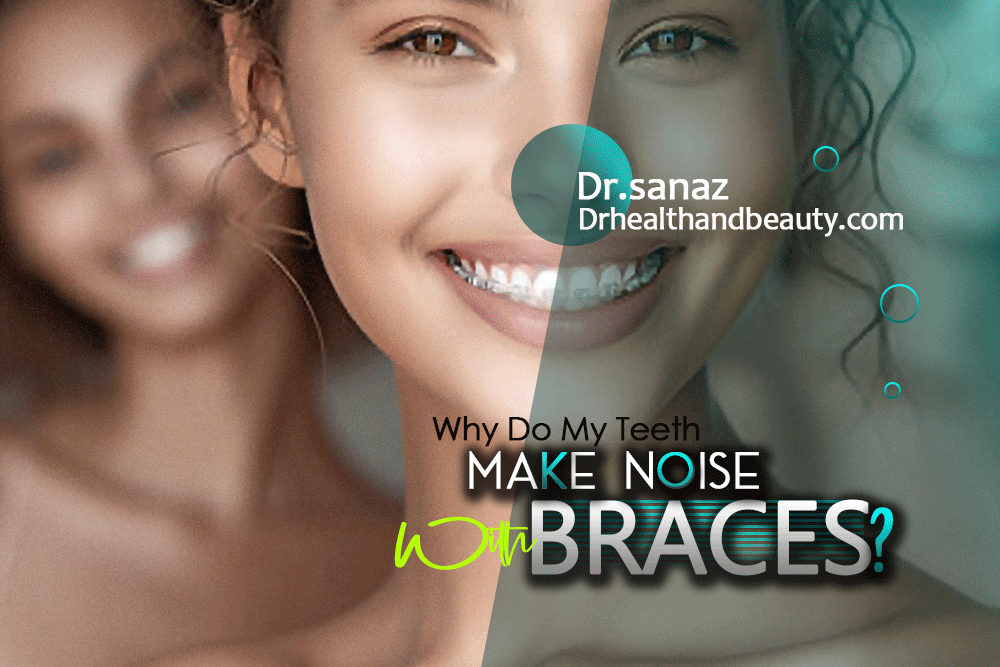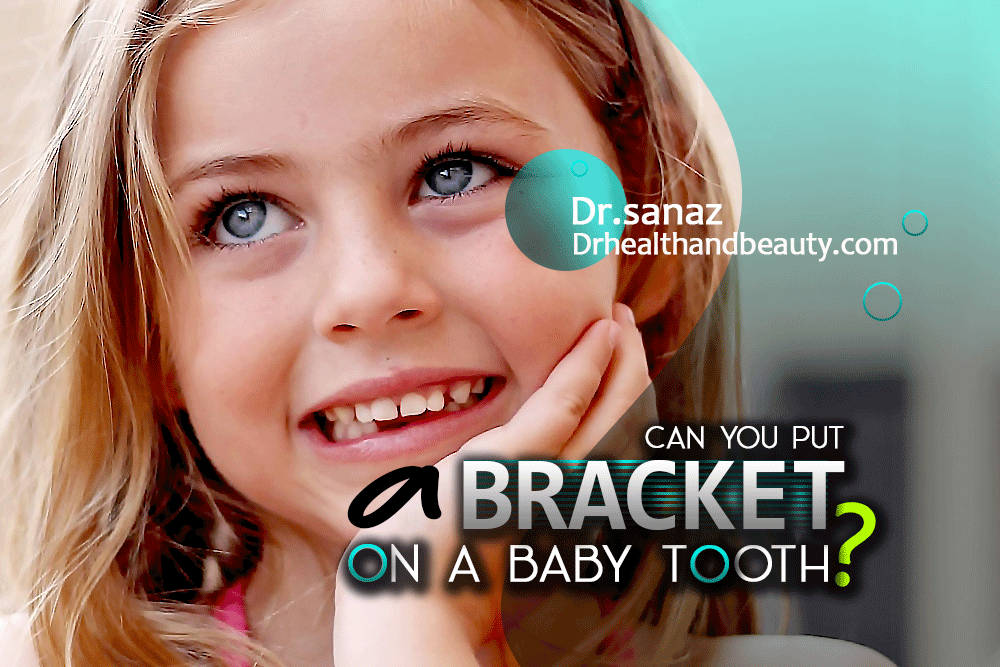

Do Lingual Braces Work For Everyone?
The content of this article is approved by “drhealthandbeauty” experts.
Note: This article is only to guide and increase your knowledge. Before taking any action, you can consult “drhealthandbeauty” doctors or your doctor for treatment.
Dental orthodontics uses different methods, lingual orthodontics being one of the most popular. People who are interested in using hidden orthodontic methods can use lingual orthodontics to improve the appearance of their mouth and beautify their smile.
Lingual orthodontics is one of the secret orthodontic methods used to improve misalignment and correct tooth position.
The main difference between this procedure and conventional orthodontics is that instead of placing orthodontic wires and brackets on the outer and visible surface of the teeth, these devices are installed on the inner surface and are less visible.
But are they right for everyone? This article addresses the benefits, limitations, and potential considerations for those considering this innovative alignment option.
What are lingual braces?
Lingual orthodontics, or back dental and lingual orthodontics, is one type of invisible orthodontics that is very suitable for adults. In this method, the brackets are connected behind the teeth and guided backwards with a wire. The orthodontist must custom design the brackets.
Lingual braces can solve more problems than crooked teeth. This orthodontics can improve your oral health. In general, lingual braces can solve the following problems:
- Moderate to severe crooked teeth
- Crowding of teeth
- Types of malocclusions
How are lingual braces different from traditional braces?
While lingual and traditional braces work to realign teeth through gradual pressure, their placement, and aesthetics set them apart. Lingual braces are attached to the inner surface of the teeth, while traditional braces are attached to the front. Not only does this placement make lingual braces virtually invisible, but it also requires orthodontists with specialized training to adjust them effectively. However, traditional braces are usually easier to maintain and monitor, often making them a quicker solution in certain cases.
Some people may find that lingual braces are more comfortable than traditional braces. In contrast, others find that they are less visible. Ultimately, your choice of orthodontic appliances depends on your individual preferences and needs.
Who can benefit the most from lingual braces?
Some adults hesitate to get braces Because they are concerned about the shape and appearance of traditional metal braces. It is a common misconception that braces are too noticeable.
While traditional metal braces are still a reliable and effective orthodontic option, advances in orthodontics have introduced less noticeable alternatives like ceramic or lingual braces. To compare and have the best choice about wire and ceramic braces, you can read the article “Do Metal Braces Work Better Than Ceramic?” read the
However, for those concerned about the appearance of braces, there are other options to consider. One of these options is lingual braces.
Lingual braces are located behind your teeth, making them invisible when you smile. They provide effective treatment while remaining hidden from view.
They are especially suitable for adults and teenagers who feel self-conscious about metal braces in professional, social, or academic settings. Athletes or musicians who play wind instruments may also prefer lingual braces because they are less likely to interfere with their performance than traditional braces.
Limitations of lingual braces
Lingual braces, despite their advantages, are not suitable for everyone. People with very small jaw structures may find wearing lingual braces uncomfortable or challenging. Additionally, because of their position, lingual braces can sometimes cause initial tongue irritation or speech changes that usually go away as people adjust.
Sometimes you may even feel no change and ask yourself “Why Are Braces Not Moving My Teeth?“. Patients should also be prepared for a more complex cleaning routine to prevent plaque build-up around the back surfaces of the teeth.
 One of the main weaknesses of lingual orthodontics is that it is difficult to use and place.
One of the main weaknesses of lingual orthodontics is that it is difficult to use and place.
In general, appointments with your doctor during treatment require more time than fixed orthodontics.
Installing lingual brackets is difficult because of their position inside the mouth.
Do lingual braces work for complex dental problems?
Back dental or lingual orthodontics has many advantages over some dental orthodontic devices. The most important advantages of lingual orthodontics are:
The main advantage of using orthodontics behind the teeth is that they are invisible.
The maneuverability of lingual braces is more suited to correcting complex problems such as changing the height of the teeth, rotating the teeth, and closing the space between the teeth.
If the patient does not follow oral hygiene well, a color change will occur behind the tooth and cannot be seen.
However, lingual braces are effective for mild to moderate alignment issues and may not be the best solution for all complex cases. Patients with severe misalignment, large gaps, or other complex dental problems may require a different type of orthodontic treatment. Although lingual braces are versatile, discussing specific treatment goals with the orthodontist will help clarify their suitability for complex corrections.
Note that small gaps after orthodontic treatments are a different issue than crooked teeth. And to know “How To Fix A Small Gap After Braces?” The relevant article will be very useful and valuable.
How to tell if lingual braces are right for you
The only way to be sure if lingual braces are right for you is to consult an orthodontist. In general, lingual orthodontics can correct the same alignment problems as conventional (buccal) braces.
However, lingual braces are not suitable for everyone. For example, patients with a very deep overbite may experience problems with frequent loosening of brackets. At your first appointment, the orthodontist will examine your teeth and discuss which treatment options would work best for you.
The wires of conventional braces are bent into a uniform horseshoe shape, but some brands of lingual orthodontics can be robotically bent to match the contours of a particular patient’s mouth. This custom fit can shorten your treatment time, but it comes at a cost.
Is lingual orthodontics uncomfortable?
Pain is a common concern of orthodontic treatments and especially the use of brackets. So the question “What Is The Hardest Part Of Getting Braces?” will be inevitable. No matter what type of braces you choose, you will get some discomfort as the teeth begin to move. Most people have this pain as a dull ache or pain when chewing, and it can generally be relieved with over-the-counter medications. It is suggested to consume soft foods like yogurt, rice and boiled eggs until the pain subsides.
Brackets can also cause pain when they are in contact with the soft tissues inside the mouth. With lingual brackets in lingual orthodontics, the tongue causes common pain due to the placement of the brackets. Meanwhile, for some patients, the discomfort of lingual braces is significant.
To improve patients, manufacturers make lingual brackets smaller and flatter. Brackets can also be customized which can reduce discomfort. For short-term relief on sensitive teeth, you can try a topical tooth-soothing gel or a small amount of wax on the sharp edges of your braces.
If the wire is scratching, contact your orthodontist. In lingual orthodontics, the wires can be cut so they don’t hurt you.
Are lingual braces effective in speech?
The short answer is yes. When you speak, your tongue touches your teeth to make certain sounds. Since the brackets are located behind the teeth, your speech is affected when using lingual braces.
While any type of braces can temporarily interfere with your speech patterns, typically, your speech may be different for about a month with lingual braces. Besides, the degree of speech disorder can be different depending on the brand of brackets used by the orthodontist.
Some patients have succeeded in correcting cleft lip using speech therapy techniques. Eventually, however, your tongue will get used to the braces, and your speaking will return to being natural.
Food restrictions with lingual braces:
Many people do not know what not to eat with tongue braces. As with traditional braces, you should avoid eating hard foods such as corn or apples, as they can break the lingual braces. It is suggested to avoid sticky foods like caramel or certain types of candy, as they stick to the back of the braces and are difficult to remove.
But what can you eat with lingual braces? Dairy foods such as cheese, yogurt or any milk product, bread, soft fruits and cereals are allowed, as well as seafood and vegetables. Meat can be a problem, so try to cut it into small pieces as much as possible.
Frequently asked questions
Who cannot do orthodontics with the lingual system?
People with severely overlapping teeth (have a deep vertical overbite) may have a little trouble with this method. Because when they are chewing and closing their teeth, they put heavy forces on the brackets. The magnitude of this problem can be debated. In addition, those who are constantly faced with oral ulcers or frequent gum and tooth infections should avoid orthodontics.
What is the quality of the results of this treatment?
The results that can be expected from lingual orthodontics are the same as regular fixed orthodontics and even slightly better. In this method, the technologies used are more effective and the quality of the wires, brackets and treatment technique are significant.
Does lingual orthodontics hurt?
The progress made in the field of orthodontics has caused that orthodontic pain caused by devices and equipment is not experienced as before. However, different parts of the lingual brace may touch the tongue, gums, inner part of the cheeks and cause slight discomfort.
Does orthodontics damage the tongue?
Since the lingual system is behind the teeth and is in direct contact with the tongue, it is natural that the tongue often touches the brackets and wires while eating or talking. The first few days of using this method can increase the user’s sensitivity and cause the tongue to be slightly irritated. Over time, when you get used to the braces, you won’t have much problem with the tongue touching the lingual brace.
Is the cost of the lingual orthodontic system higher than that of other methods?
Yes. Due to the complexity of installing and adjusting this orthodontic system, its cost is relatively higher than that of other methods.
Is the duration of lingual orthodontics longer than conventional and mobile orthodontics?
The duration of this orthodontics is equal to and slightly longer than normal orthodontics. However, since the use of lingual is different from mobile orthodontics, it is not correct to compare the duration of the two. However, orthodontic plaques solve minor to moderate teeth misalignment problems between 4 and 12 months.
conclusion
Braces are one of the most effective orthodontic treatments to align teeth. Although braces are more popular in all types of orthodontic treatments. But you should note that some obstacles such as the age limit for braces can delay its effect.
However, Lingual orthodontics is a shape of invisible orthodontics. In this method, the brackets are placed behind the teeth and no brackets are visible. People who appear in public and have high social relations can use this method. Orthodontics behind a tooth is completely invisible and if it is custom designed by a dentist, it is less painful.
This method can be used for many dental abnormalities. Of course, abnormalities such as severe overbite cannot be treated with orthodontics. The cost of this orthodontics is high, and some people stop doing it for this reason and go for regular orthodontics.

